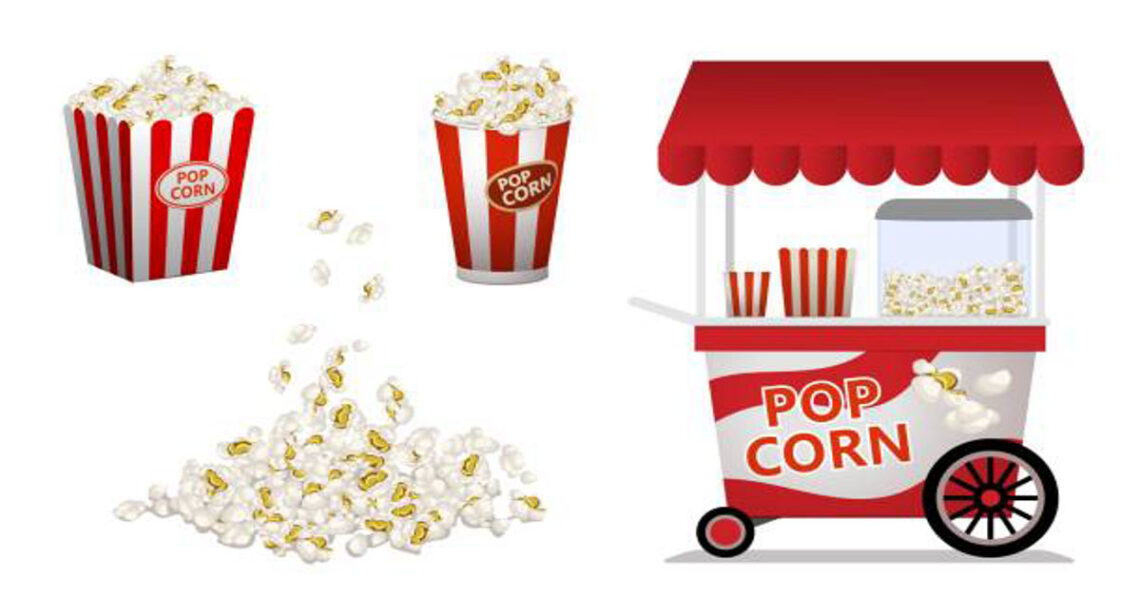Popcorn has become one of the most beloved snacks across the globe — light, crispy, aromatic, and comforting. Whether you enjoy it while watching a movie, at a carnival, or as a quick home snack, popcorn holds an undeniable charm that bridges generations. But behind every fluffy kernel is a wonderful piece of technology that makes it possible: the popcorn machine.
The popcorn machine, often called a popper, is a device designed to heat corn kernels until they burst open, transforming into the delicious, airy snack we all love. While the concept may sound simple, the science, design, and technology behind popcorn machines are quite fascinating. They represent the perfect harmony between physics, culinary art, and mechanical innovation.
In this detailed and unique article, we’ll dive deep into every aspect of popcorn machines — their history, mechanisms, different types, advantages, buying considerations, maintenance, and modern innovations. You’ll also find helpful tables comparing models, features, and performance to make the topic easier to understand.
The History and Evolution of the Popcorn Machine
To appreciate today’s sleek and modern popcorn machines, it’s important to understand where they came from. Popcorn itself has an ancient history. Archaeological evidence shows that popcorn was enjoyed by early civilizations in the Americas thousands of years ago. However, the concept of a mechanical popcorn machine was first popularized in the late 19th century.
The credit for the first commercial popcorn machine goes to Charles Cretors, an inventor from Chicago who revolutionized popcorn making in the 1880s. Before his invention, popcorn was usually made in pans over an open fire, which often resulted in uneven cooking and burned kernels. Cretors designed a steam-powered popcorn machine that could heat kernels evenly while stirring them automatically. This innovation made popcorn easier to produce in large quantities and more consistent in texture and flavor.
During the early 20th century, popcorn machines became a common sight at fairs, movie theaters, and street corners. Their design evolved from bulky, steam-powered units to compact electric versions, allowing them to be used in homes, schools, and offices. Today’s popcorn machines combine functionality with style — using electricity, hot air, or even microwaves — and are available in various designs to suit every environment from cinemas to kitchens.
How a Popcorn Machine Works
Although there are different types of popcorn machines, their basic working principle remains the same: heating kernels until the internal moisture turns into steam, causing them to expand and pop.
A popcorn kernel contains a small amount of water trapped inside a hard shell (the pericarp). When the kernel is heated to around 180°C (356°F), the moisture turns to steam, creating internal pressure. Once the pressure exceeds the shell’s strength, it bursts open, turning the inside starch into the fluffy foam we call popcorn.
Let’s understand how a standard popcorn machine executes this process step-by-step:
- Heating Phase: The machine’s heating element or kettle starts warming up once switched on.
- Oil Addition: In most machines, a small amount of oil is added to ensure even heating and flavor.
- Kernel Addition: Corn kernels are poured into the heated kettle or chamber.
- Popping Process: As temperature rises, kernels start popping rapidly, usually within 2–4 minutes.
- Collection: The popped corn overflows or drops into a collection tray or compartment.
- Serving: The popcorn is scooped or automatically dispensed into containers or bowls.
This process happens quickly, making popcorn machines efficient tools for both home and commercial use.
Main Components of a Popcorn Machine
Understanding the parts of a popcorn machine helps you operate and maintain it efficiently.
| Component | Description | Function |
|---|---|---|
| Kettle/Heating Chamber | Metal container, usually stainless steel | Heats and pops the kernels evenly |
| Heating Element | Electrical or gas heater | Provides necessary temperature |
| Stirring Rod or Arm | Rotates inside the kettle | Prevents burning and ensures even heating |
| Glass/Plastic Enclosure | Protective outer casing | Keeps heat in and prevents spills |
| Warming Deck | Heated bottom tray | Keeps popcorn warm and crisp |
| Oil Measure & Kernel Scoop | Measuring accessories | Helps with portion control |
| Exhaust Vent or Filter | Air outlet for steam | Prevents condensation and sogginess |
Each of these components contributes to producing perfect popcorn in terms of taste, texture, and aroma.
Types of Popcorn Machines
Popcorn machines are available in various designs and mechanisms to suit different needs. Below are the major categories:
1. Hot Air Popcorn Machines
These machines use circulating hot air instead of oil to pop kernels. They are among the healthiest options since they produce low-fat popcorn without added oils. Hot air poppers are ideal for health-conscious individuals and small households. They work by blowing heated air into a chamber where kernels rotate until they pop.
Advantages:
- Oil-free and low-calorie results
- Easy to clean and maintain
- Quick operation
Disadvantages:
- Popcorn can be drier
- Less flavor compared to oil-popped versions
2. Oil Popcorn Machines (Traditional Kettle Popcorn Makers)
These are the most popular and widely used types, especially in cinemas and events. They use a metal kettle with oil to heat the kernels, producing the classic buttery flavor most people love.
Advantages:
- Rich, authentic taste
- Produces crispy popcorn
- Suitable for large batches
Disadvantages:
- Requires cleaning after each use
- Slightly higher in calories due to oil
3. Microwave Popcorn Machines
These compact appliances combine the convenience of microwave heating with the design of traditional popcorn makers. They use a special bowl or container that circulates heat evenly to pop kernels quickly.
Advantages:
- Simple and fast operation
- Portable and easy to store
- No external power required beyond microwave
Disadvantages:
- Limited capacity
- May not produce even popping
4. Commercial Popcorn Machines
Used in cinemas, stadiums, and amusement parks, commercial popcorn machines are large-capacity units capable of making multiple servings per minute. They use heavy-duty kettles, thermostatic temperature controls, and warming decks to keep popcorn fresh for hours.
Advantages:
- High efficiency
- Long-lasting and durable
- Suitable for continuous operation
Disadvantages:
- Expensive
- Requires more space and maintenance
5. Stove-Top Popcorn Makers
A manual and old-fashioned method, stove-top popcorn makers are simple pots with built-in stirrers. They are still loved by traditionalists who enjoy controlling the cooking process.
Advantages:
- Classic popcorn texture and flavor
- Affordable and portable
Disadvantages:
- Manual stirring required
- May produce uneven results if overheated
Comparison Table: Popcorn Machine Types
| Type | Uses Oil | Capacity | Health Level | Ease of Cleaning | Best For |
|---|---|---|---|---|---|
| Hot Air | No | Small | Excellent | Very Easy | Home & health-conscious users |
| Oil Popper | Yes | Medium–Large | Moderate | Moderate | Cinemas, parties |
| Microwave | Optional | Small | Good | Easy | Quick snacks |
| Commercial | Yes | Very Large | Moderate | Moderate | Theaters, businesses |
| Stove-Top | Yes | Medium | Moderate | Easy | Traditional users |
Benefits of Having a Popcorn Machine
A popcorn machine is more than just a novelty; it’s a convenient and economical addition to any household or business. Let’s explore its many benefits:
- Healthier Snacking: When made in a hot air machine or with minimal oil, popcorn becomes a low-calorie, high-fiber snack perfect for guilt-free indulgence.
- Cost Savings: Buying bulk kernels is much cheaper than prepackaged popcorn bags. A home machine pays for itself over time.
- Custom Flavors: You can experiment with sweet, savory, or spicy toppings such as caramel, cheese, butter, or herbs.
- Quick Preparation: Most machines make a full batch in under 5 minutes, making it a perfect last-minute snack option.
- Entertaining Guests: The sound and aroma of popping corn create excitement during gatherings or movie nights.
- Business Potential: Commercial popcorn machines are profitable for small businesses, fairs, and cinemas.
Popcorn Machine Size and Capacity
Popcorn machines come in different sizes based on their kettle capacity, typically measured in ounces.
| Kettle Size | Popcorn Output | Ideal For |
|---|---|---|
| 4 oz | ~1 gallon per batch | Home use, small gatherings |
| 6 oz | ~1.5 gallons | Medium households, small offices |
| 8 oz | ~2 gallons | Parties, small events |
| 12 oz | ~3 gallons | School canteens, large families |
| 16 oz and above | 4+ gallons | Commercial theaters, fairs |
The larger the kettle size, the more popcorn it can produce at once. However, large models require more space and power, making them best suited for business use.
Maintenance and Cleaning Tips
Maintaining your popcorn machine properly extends its life and ensures hygiene. Here’s how to keep it in top condition:
- Unplug and Cool: Always disconnect the power and let the machine cool before cleaning.
- Empty Kettle: Remove unpopped kernels and old oil after every batch.
- Clean Kettle: Wipe with a damp cloth using mild detergent. Avoid submerging electrical parts in water.
- Glass or Plastic Panels: Clean with non-abrasive glass cleaner to maintain visibility.
- Heating Deck: Remove debris regularly to prevent buildup.
- Lubricate Moving Parts: Occasionally oil the stirrer or mechanical arm to prevent friction wear.
Consistent maintenance prevents odor buildup and ensures every batch tastes fresh.
Safety Precautions When Using Popcorn Machines
Popcorn machines operate at high temperatures, so proper safety precautions are essential:
- Keep flammable materials away from the machine.
- Never leave the unit unattended while in operation.
- Use heat-resistant gloves when handling the kettle.
- Do not overload the kettle with kernels or oil.
- Keep children supervised near the machine.
- Ensure adequate ventilation during use.
By following these practices, you can enjoy delicious popcorn safely and efficiently.
Energy Efficiency and Power Consumption
Popcorn machines vary in power usage depending on their type and size.
| Machine Type | Average Power Usage (Watts) | Energy Efficiency |
|---|---|---|
| Hot Air Popper | 1200–1500 | High |
| Small Oil Popper | 800–1200 | Moderate |
| Commercial Popper | 1500–3000 | Moderate |
| Microwave Popper | 700–1000 | High |
Hot air and microwave popcorn makers are generally the most energy-efficient since they heat only the kernels without wasting energy on excess oil or warming decks.
Modern Innovations in Popcorn Machines
Today’s popcorn machines have come a long way from their early designs. Modern innovations have made them more convenient, efficient, and fun. Some popular advancements include:
- Digital Controls: Machines with digital timers and temperature settings ensure perfect popping every time.
- Non-Stick Coatings: Easier cleanup and reduced oil residue.
- Automatic Stirring: Ensures even popping and prevents burning.
- Dual-Flavor Compartments: Allow making sweet and salty popcorn simultaneously.
- LED Lighting and Display Windows: Add an aesthetic appeal, especially for commercial machines.
- Smart Popcorn Makers: Some home models connect to smartphones or smart home systems for remote operation.
These innovations continue to make popcorn making not only simpler but also more enjoyable.
Common Popcorn Machine Problems and Solutions
| Problem | Possible Cause | Solution |
|---|---|---|
| Popcorn not popping | Old kernels or low heat | Use fresh kernels, preheat kettle properly |
| Burnt popcorn | Excessive heat or oil | Reduce temperature, stir continuously |
| Machine smoking | Residue build-up | Clean kettle and heating element |
| Popcorn soggy | Steam trapped inside | Open vent or lid to release moisture |
| Stirrer not working | Mechanical jam | Check and clean stirring mechanism |
With proper care and attention, these issues are easy to fix and prevent.
Buying Guide: How to Choose the Best Popcorn Machine
When purchasing a popcorn machine, consider the following key factors:
- Capacity Needs: Choose kettle size based on household or business volume.
- Type Preference: Hot air for healthy eating, oil-based for taste.
- Material Quality: Prefer stainless steel kettles and durable glass enclosures.
- Ease of Cleaning: Non-stick interiors save time.
- Design and Aesthetics: For home décor, choose compact, stylish models; for business, choose heavy-duty machines.
- Safety Features: Look for machines with auto shut-off and cool-touch handles.
- Budget and Warranty: Good popcorn makers range from affordable home units to high-end commercial models with extended warranties.
A well-chosen popcorn machine not only enhances your snacking experience but can also become a fun centerpiece for gatherings and events.
Sustainability and Environmental Aspects
Popcorn machines contribute positively to sustainability when compared to single-use snack packaging. Using bulk kernels reduces waste from prepackaged microwave popcorn bags. Additionally, many modern manufacturers now design energy-efficient and recyclable models, incorporating stainless steel, glass, and BPA-free plastics.
By choosing reusable oil containers, biodegradable serving cups, and cleaning with eco-friendly products, you can enjoy popcorn sustainably without harming the environment.
Popcorn Machine for Business Use
For entrepreneurs, popcorn machines present a lucrative business opportunity. They are common in:
- Cinemas and theaters
- Street food stalls
- Fairs and amusement parks
- School canteens
- Cafes and event catering
Profit margins are high since popcorn’s raw material cost is minimal compared to its retail price. A commercial popcorn machine with high output and visibility (often featuring glass display cabinets and warming lights) attracts customers and creates sensory appeal through aroma and sound.
Conclusion
The popcorn machine stands as a perfect example of how simple science and clever engineering can bring joy to everyday life. From its humble beginnings in the 19th century to today’s smart and stylish models, it continues to evolve while preserving its essential charm.
Whether you’re a movie lover, a health-conscious snacker, or a small business owner, investing in a popcorn machine offers multiple rewards — convenience, cost-efficiency, and the unmatched pleasure of fresh, warm popcorn anytime you desire.
By understanding the machine’s types, working mechanism, and maintenance, you can ensure long-term performance and make every popcorn moment a delightful experience. In the end, a good popcorn machine doesn’t just pop kernels — it pops happiness.
Frequently Asked Questions (FAQs)
1. What is the best type of popcorn machine for home use?
Hot air popcorn machines are ideal for home use since they are compact, oil-free, and easy to maintain.
2. How long does a popcorn machine last?
With proper maintenance, most home popcorn machines last 5–10 years, while commercial units can last over a decade.
3. Can I use butter instead of oil in a popcorn machine?
It’s better to add butter after popping since direct use can burn and affect the machine’s heating element.
4. How often should I clean my popcorn machine?
Clean after each use to prevent oil buildup and odor. Deep-clean commercial machines weekly.
5. Are popcorn machines energy-efficient?
Yes. Hot air and microwave popcorn machines consume less energy, while large commercial ones are moderately efficient.





